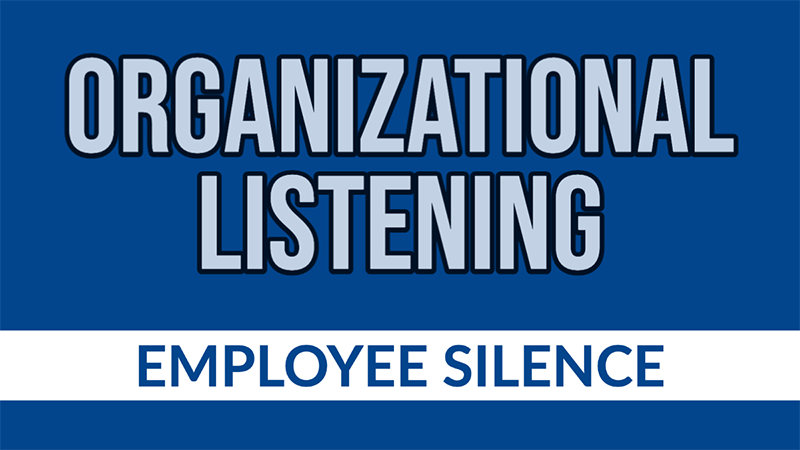Employees will share their voices when they know the company will listen
March 7, 2022

By Minjeong Kang and Bitt Moon (doctoral candidate), The Media School, Indiana University
In our Page Center-funded project, we aimed to explore how organizational listening competency reduces employee silence in the workplace. The pervasive culture of employee silence is detrimental to fostering an open and safe work environment for organizational learning and innovation.
For this project, we explored factors that interfere with employee voice. Our goal was to propose an organizational listening competency (OLC) measure. To do that, we conducted in-depth interviews and an online survey with 550 U.S. employees.
The survey results indicated that employee silence driven by fear and futility predicted a high turnover intention and low employee job engagement. These findings show that employee silence is detrimental to organizations by increasing employee defects and low job engagement.
We identified five dimensions of OLC from our interview data and open-ended responses from the main survey as follows:
- The Legitimacy of Employee Voice and Perspective reflects how an organization values employee voice and perspectives as worthy of consideration and legitimate to organizational success
- Transparent Communication Manner represents how an organization communicates with employees in a straightforward and timely manner.
- Explanation of Voice Procedure and Outcomes reflects how an organization provides precise and thorough descriptions of organizational procedures for employees to voice.
- Fair Procedure to Voice describes fair and consistent applications of voice procedures.
- Accessibility to Voice indicates how an organization provides employees with easy, safe, and sufficient access to voice out.
Finally, we examined whether or not organizational listening competency might reduce employee silence motives. The results indicated that employees were less likely to be silent when their organization values employee voice as legitimate to organizational success, and clearly and openly explains the procedure of employee voice.
Additionally, employees were likely to voice their suggestions and opinions when they perceive that the organization fairly listens to employee voices and provides sufficient and appropriate channels to share their voice.
Managerial Recommendations
The OLC model can diagnose an organization's listening competency in multiple aspects by identifying strengths and weaknesses in its listening competency. Based on the score of each dimension, an organization may develop listening strategies to foster a safe and open culture of employee voice.
The OLC model can also investigate how OLC is perceived differently within or across organizations. Our data showed that employees' evaluations of OLC varied depending on their positions and industry characteristics.
Rank-and-file employees were more likely to evaluate OLC poorly than managers. Employees working in educational institutions and the government sector perceived OLC more negatively than those working in banking or high-tech industry.
Based on the findings on factors associated with employee silence as a hindrance for effective and ethical organizational listening, we suggest the following three recommendations to management:
1. Organizational listening is about orientation
Show employees how the organization respects and values their voices as legitimate partners for organizational success. When employees perceive that their opinions are not valued or respected by management, employees will stop communicating. Then, they will turn to external venues and "dark sites" for grievances and complaints.
2. Organizational listening is about procedures
Be fair and transparent about how employee voices are being considered. Remember that the managers’ perceptions of organizational listening differ from those of the employees. Playing favoritism regarding whom to listen to without proper and transparent procedural consistency can silence employees. Also, it is important to communicate back to employees about how their opinions have been considered, and what has resulted from their voices even if their opinions were not adopted.
3. Organizational listening is about action
Follow up with actions and meaningful changes after soliciting employee input. It does not mean that all employee inputs must be followed. When employees feel that their voices result in changes, they are motivated to bring up ideas and suggestions. On the other hand, when employees see their voices have made no meaningful changes, they perceive organizational listening as performative.
This project was supported by a 2020 Page/Johnson Legacy Scholar Grant from the Arthur W. Page Center.

